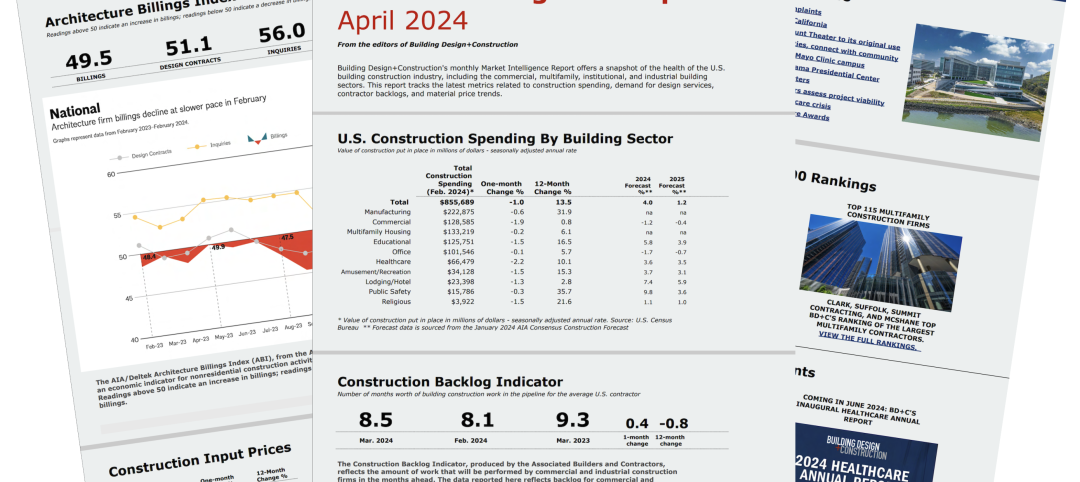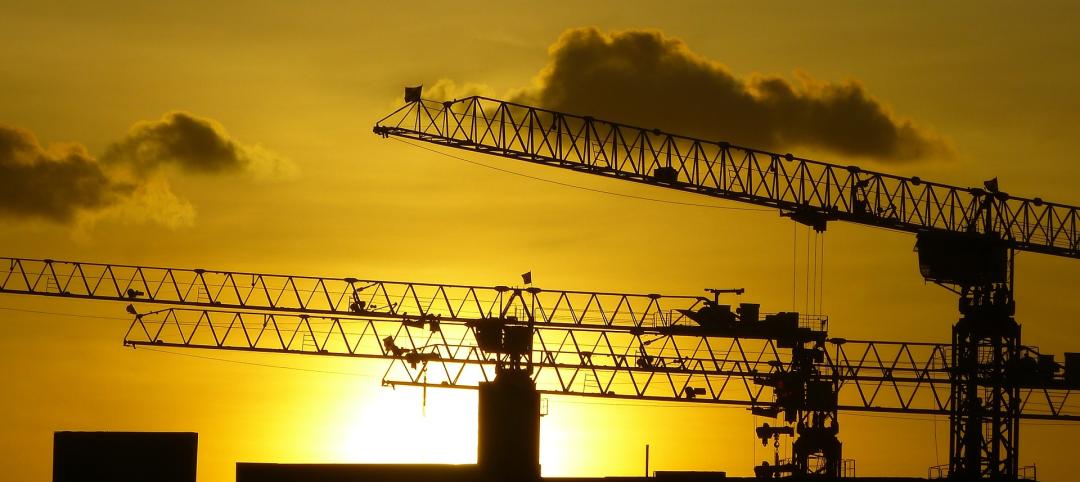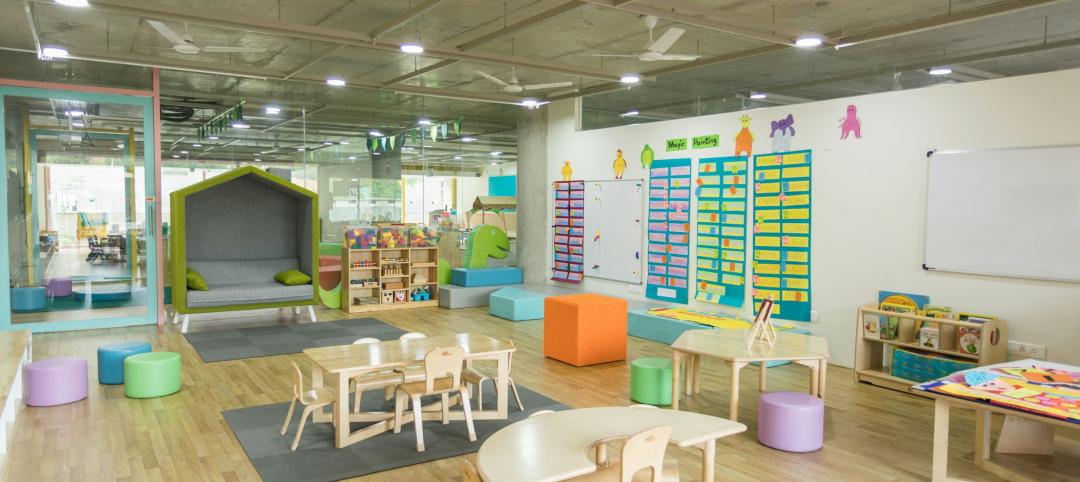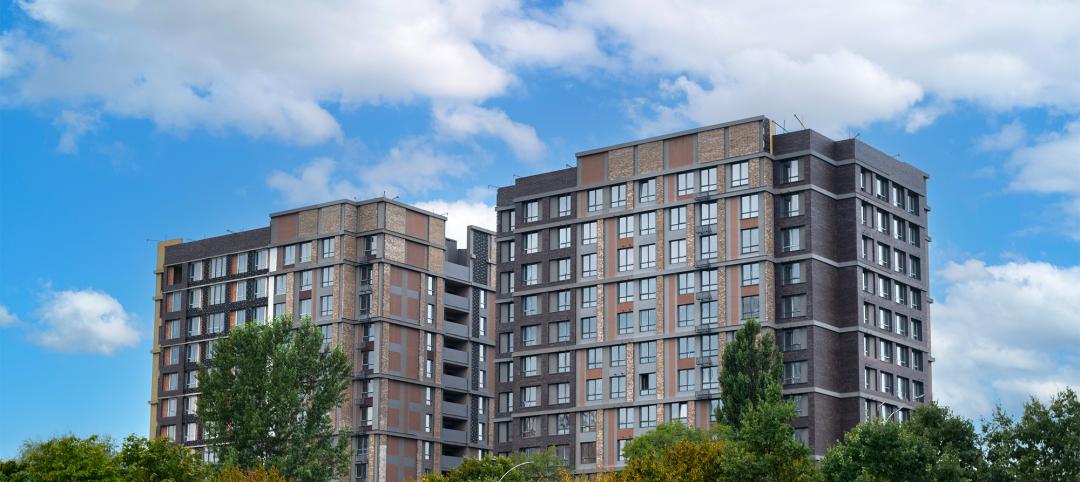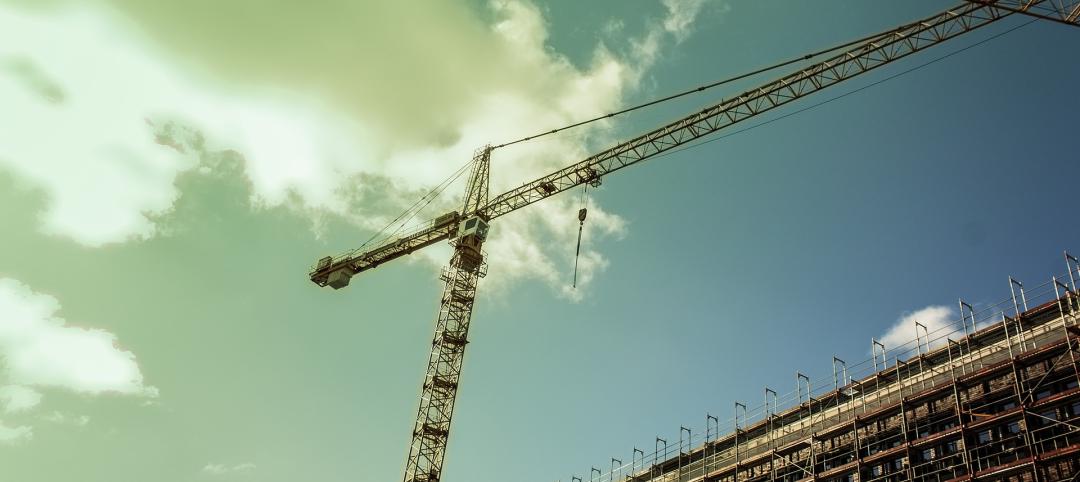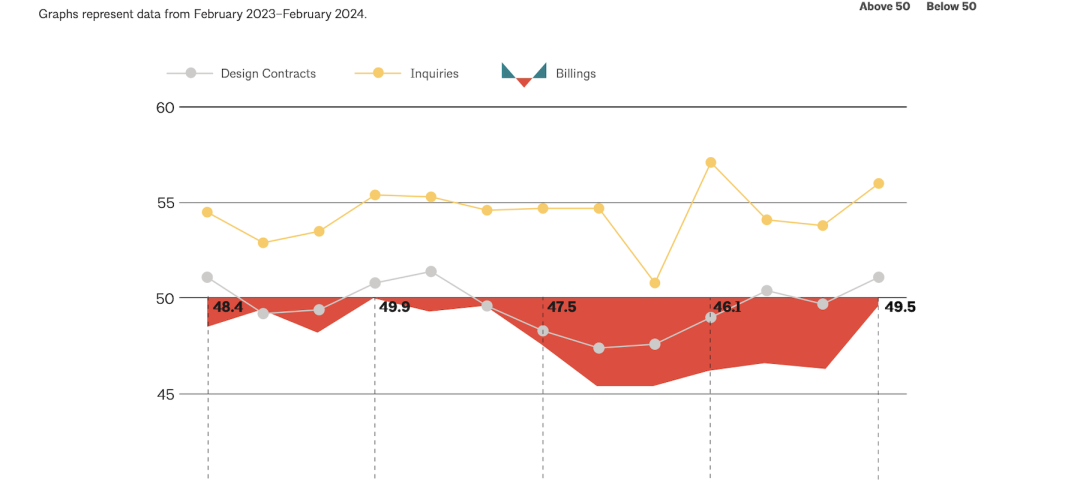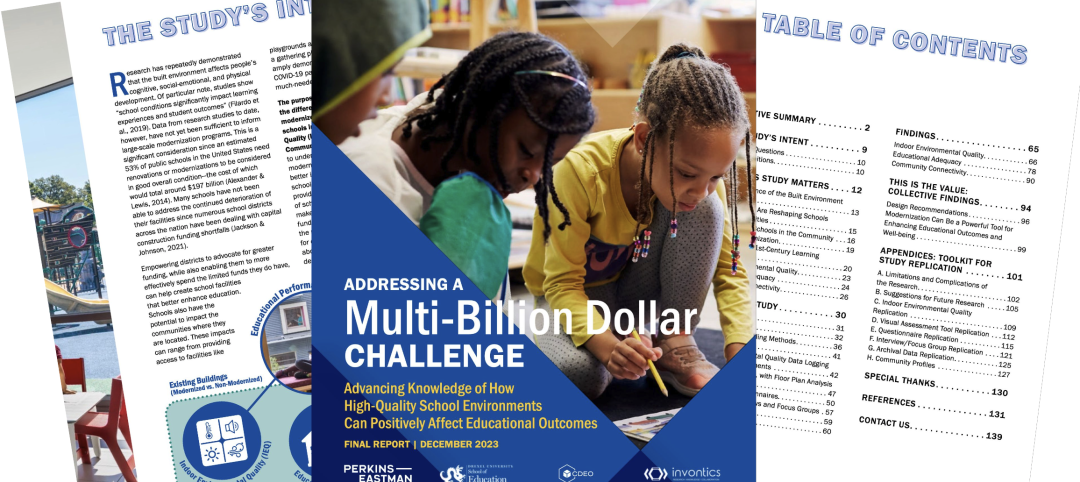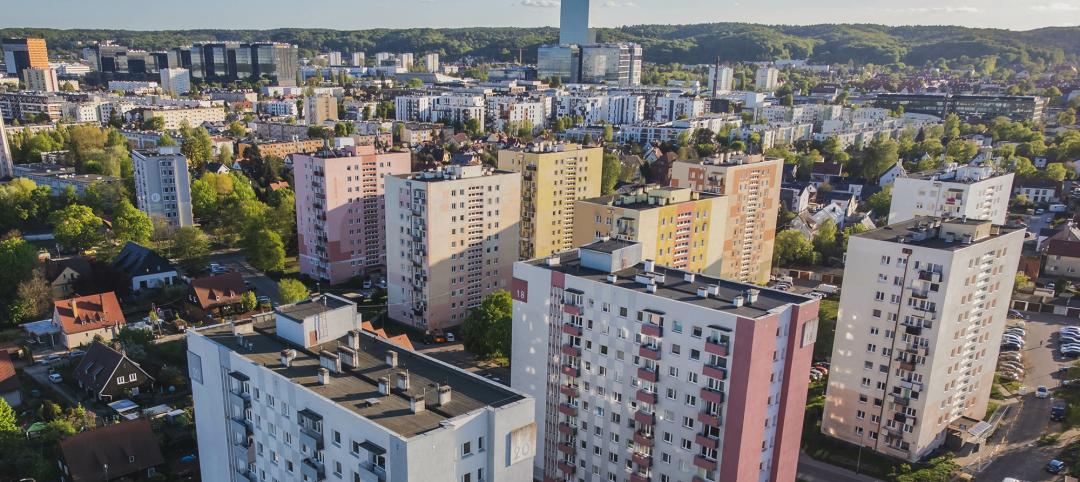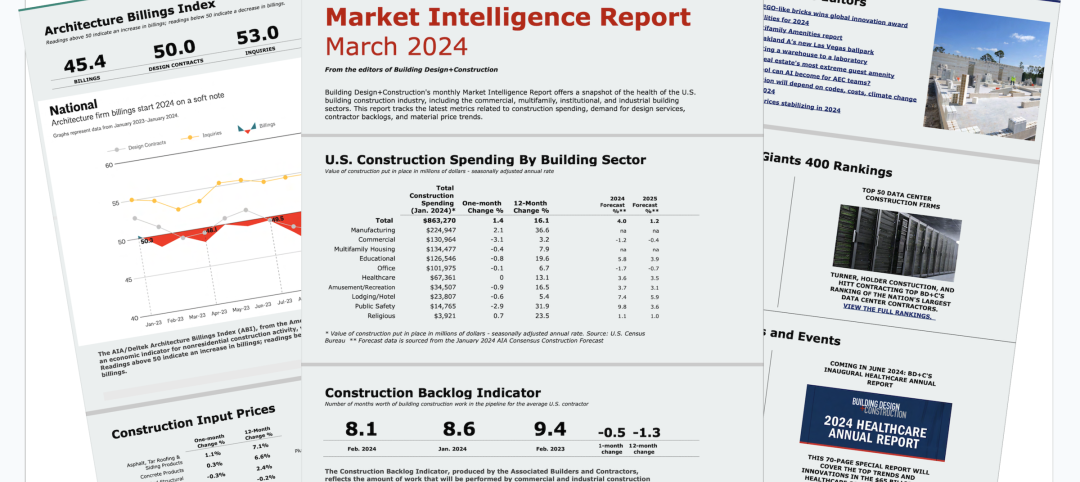Associated Builders and Contractors (ABC) today reported that its Construction Backlog Indicator(CBI) expanded to 9.67 months during the fourth quarter of 2017—its highest level ever and a 2.25% increase from the prior quarter. Backlog records were broken in the Northeast region, the commercial/industrial segment and among firms with $30 to $50 million in annual revenues. CBI is up by 1.36 months, or 16.3%, on a year-over-year basis.

“During the fourth quarter of 2017, the CBI established an all-time high, breaking records set during both the first and third quarters of last year,” said ABC Chief Economist Anirban Basu. “The implication is that the average nonresidential construction firm entered 2018 with significant momentum. Construction spending is set to be elevated this year under virtually any conceivable scenario.
“A confluence of factors has produced this result, including still-expansionary monetary policy and accelerating global growth in much of the world, brisk foreign investment in U.S. commercial real estate, surging business/developer confidence, deregulation of certain key industries, higher energy prices, strong consumer spending, a recovering U.S. manufacturing sector and rising spending in a handful of publicly financed construction categories,” said Basu. “Recently enacted tax reform is likely to serve as an additional tailwind to an already strong construction story.
“As always, there is reason for some concern. While 2018 is likely to be a solid year for construction spending, there are grey clouds emerging from the silver linings. A trade dispute with Canada has helped push softwood lumber prices higher. Recently announced tariffs on steel and aluminum may have similar effects. Indeed, inflationary pressures are building in various elements of the economy, including wages, health care, homes, apartments and tuition. The result is an increasingly inflationary economy likely to produce higher interest rates over time,” said Basu. “Should interest rates rise too quickly, backlog is likely to eventually decline as fewer developments are green-lighted due to higher borrowing costs.”

Highlights by Region
Backlog in the South fell 2.9% during the fourth quarter, but remains nearly 15%higher on a year-over-year basis. Southern markets such as Orlando, Atlanta, Nashville, Dallas and Austin continue to be associated with significant construction momentum. The storms of several months ago also have helped lift backlog in Houston and other impacted communities.
Backlog in the Northeast expanded for a fifth consecutive quarter as cities like Boston, New York and Philadelphia continue to experience brisk commercial investment. The region’s backlog has expanded by nearly 23% during the past year and now stands at its highest recorded level.
Backlog in the Middle States rebounded during the fourth quarter after declining during the prior two quarters. The 9.5% quarterly increase represented the largest quarterly increase in any of the four regions.
Backlog in the West continued to rise during the fourth quarter, but still stands at just 7 months. The 2017 California wildfire season, which was the most destructive on record and burned nearly 1.4 million acres, likely stalled a certain volume of construction projects and suppressed fourth quarter backlog.
Highlights by Industry
Backlog in the commercial/institutional segment expanded briskly for a second consecutive quarter. At 10.1 months, the segment’s average backlog is at its highest level in the history of the series.
Average backlog in the heavy industrial category fell for a third consecutive quarter. At 5.2 months, the segment’s backlog is down 5.2% on a quarterly basis and 5.8% on a year-over-year basis. CBI has neatly predicted recently observed declines in construction activity related to U.S. manufacturing.
Backlog in the infrastructure category inched up to 12.55 months during the fourth quarter, the highest reading on record for the segment. Improving state and local government finances are helping spur additional public construction, including in the education, public safety, highway/street and transportation categories.
Highlights by Company Size
Large firms, those with annual revenues in excess of $100 million, have experienced skyrocketing backlog during the past year. The combination of large-scale commercial/mixed-use development and stepped up public construction activity has produced an average backlog approaching 14.6 months. Backlog for the nation’s largest nonresidential construction firms is up an astonishing 35% during the past year.
Backlog among firms with annual revenues between $50 million and $100 million fell by 0.8 months in the fourth quarter and currently stands at a still-healthy 10.73 months. Backlog for this category is at its second highest level since the late stages of 2013.
Firms with $30 million to $50 million in annual revenues experienced their fifth consecutive quarter of rising backlog. The fourth quarter reading of 11.89 months surpasses the third quarter of 2012 as the highest on record.
Backlog for firms with annual revenues below $30 million increased by 0.4% during the fourth quarter and remains remarkable steady. For the past three years, backlog for this category has remained in a tight range between 7.2 months and 8.1 months. It is conceivable that the lack of pronounced growth in backlog for this group is due to a lack of available workforce. The lack of a reliably available workforce renders it difficult for smaller firms to commit to the larger-scale projects that would pump up backlog.

CBI is a leading economic indicator that reflects the amount of construction work under contract, but not yet completed. CBI is measured in months, with a lengthening backlog implying expanding demand for construction services. More CBI charts and graphs are available on abc.org.
Related Stories
Construction Costs | Apr 18, 2024
New download: BD+C's April 2024 Market Intelligence Report
Building Design+Construction's monthly Market Intelligence Report offers a snapshot of the health of the U.S. building construction industry, including the commercial, multifamily, institutional, and industrial building sectors. This report tracks the latest metrics related to construction spending, demand for design services, contractor backlogs, and material price trends.
Market Data | Apr 16, 2024
The average U.S. contractor has 8.2 months worth of construction work in the pipeline, as of March 2024
Associated Builders and Contractors reported today that its Construction Backlog Indicator increased to 8.2 months in March from 8.1 months in February, according to an ABC member survey conducted March 20 to April 3. The reading is down 0.5 months from March 2023.
K-12 Schools | Apr 10, 2024
Surprise, surprise: Students excel in modernized K-12 school buildings
Too many of the nation’s school districts are having to make it work with less-than-ideal educational facilities. But at what cost to student performance and staff satisfaction?
Multifamily Housing | Apr 9, 2024
March reports record gains in multifamily rent growth in 20 months
Asking rents for multifamily units increased $8 during the month to $1,721; year-over-year growth grew 30 basis points to 0.9 percent—a normal seasonal growth pattern according to Yardi Matrix.
Retail Centers | Apr 4, 2024
Retail design trends: Consumers are looking for wellness in where they shop
Consumers are making lifestyle choices with wellness in mind, which ignites in them a feeling of purpose and a sense of motivation. That’s the conclusion that the architecture and design firm MG2 draws from a survey of 1,182 U.S. adult consumers the firm conducted last December about retail design and what consumers want in healthier shopping experiences.
Market Data | Apr 1, 2024
Nonresidential construction spending dips 1.0% in February, reaches $1.179 trillion
National nonresidential construction spending declined 1.0% in February, according to an Associated Builders and Contractors analysis of data published today by the U.S. Census Bureau. On a seasonally adjusted annualized basis, nonresidential spending totaled $1.179 trillion.
Market Data | Mar 26, 2024
Architecture firm billings see modest easing in February
Architecture firm billings continued to decline in February, with an AIA/Deltek Architecture Billings Index (ABI) score of 49.5 for the month. However, February’s score marks the most modest easing in billings since July 2023 and suggests that the recent slowdown may be receding.
K-12 Schools | Mar 18, 2024
New study shows connections between K-12 school modernizations, improved test scores, graduation rates
Conducted by Drexel University in conjunction with Perkins Eastman, the research study reveals K-12 school modernizations significantly impact key educational indicators, including test scores, graduation rates, and enrollment over time.
MFPRO+ News | Mar 16, 2024
Multifamily rents stable heading into spring 2024
National asking multifamily rents posted their first increase in over seven months in February. The average U.S. asking rent rose $1 to $1,713 in February 2024, up 0.6% year-over-year.
Market Data | Mar 14, 2024
Download BD+C's March 2024 Market Intelligence Report
U.S. construction spending on buildings-related work rose 1.4% in January, but project teams continue to face headwinds related to inflation, interest rates, and supply chain issues, according to Building Design+Construction's March 2024 Market Intelligence Report (free PDF download).



